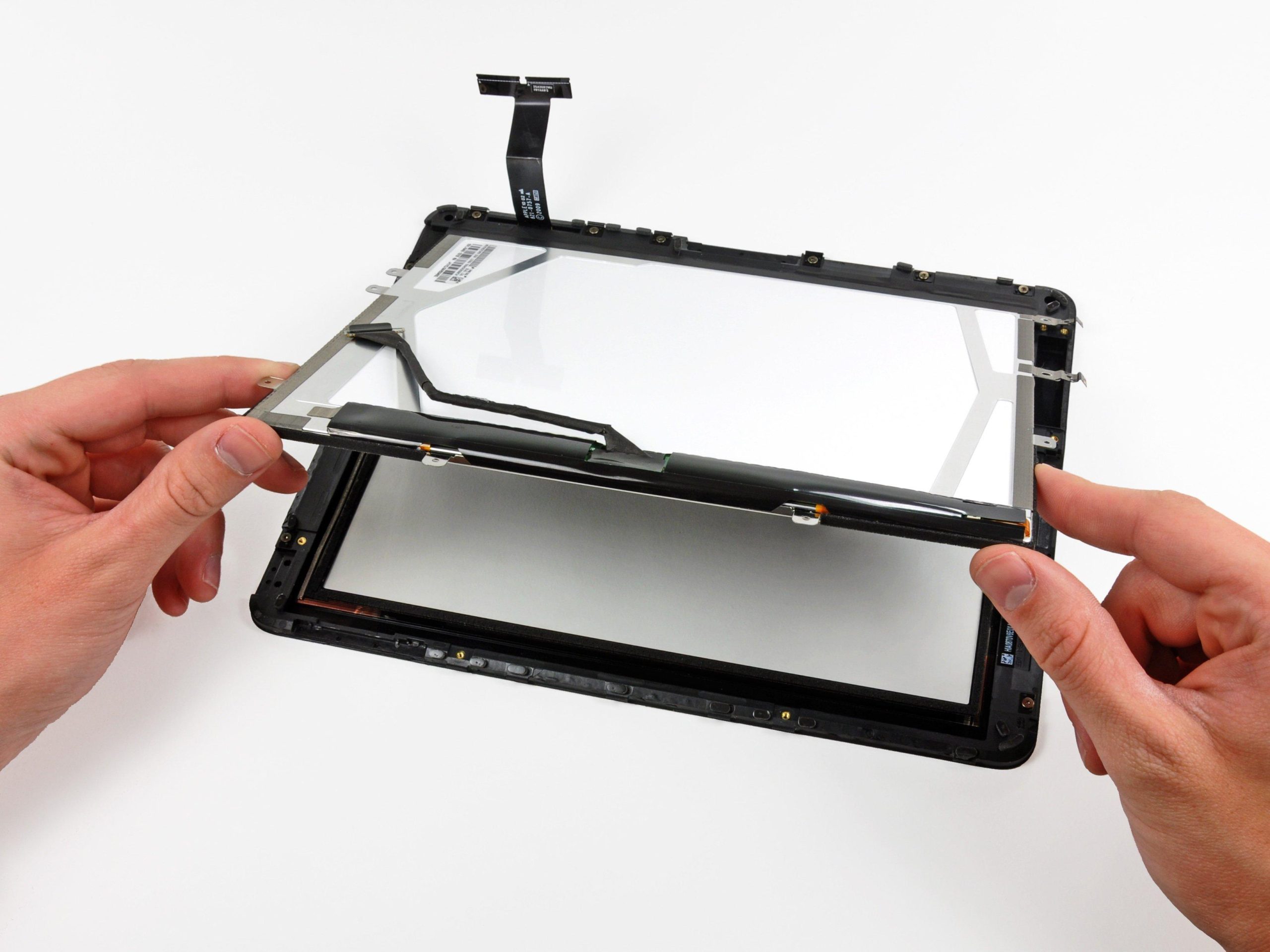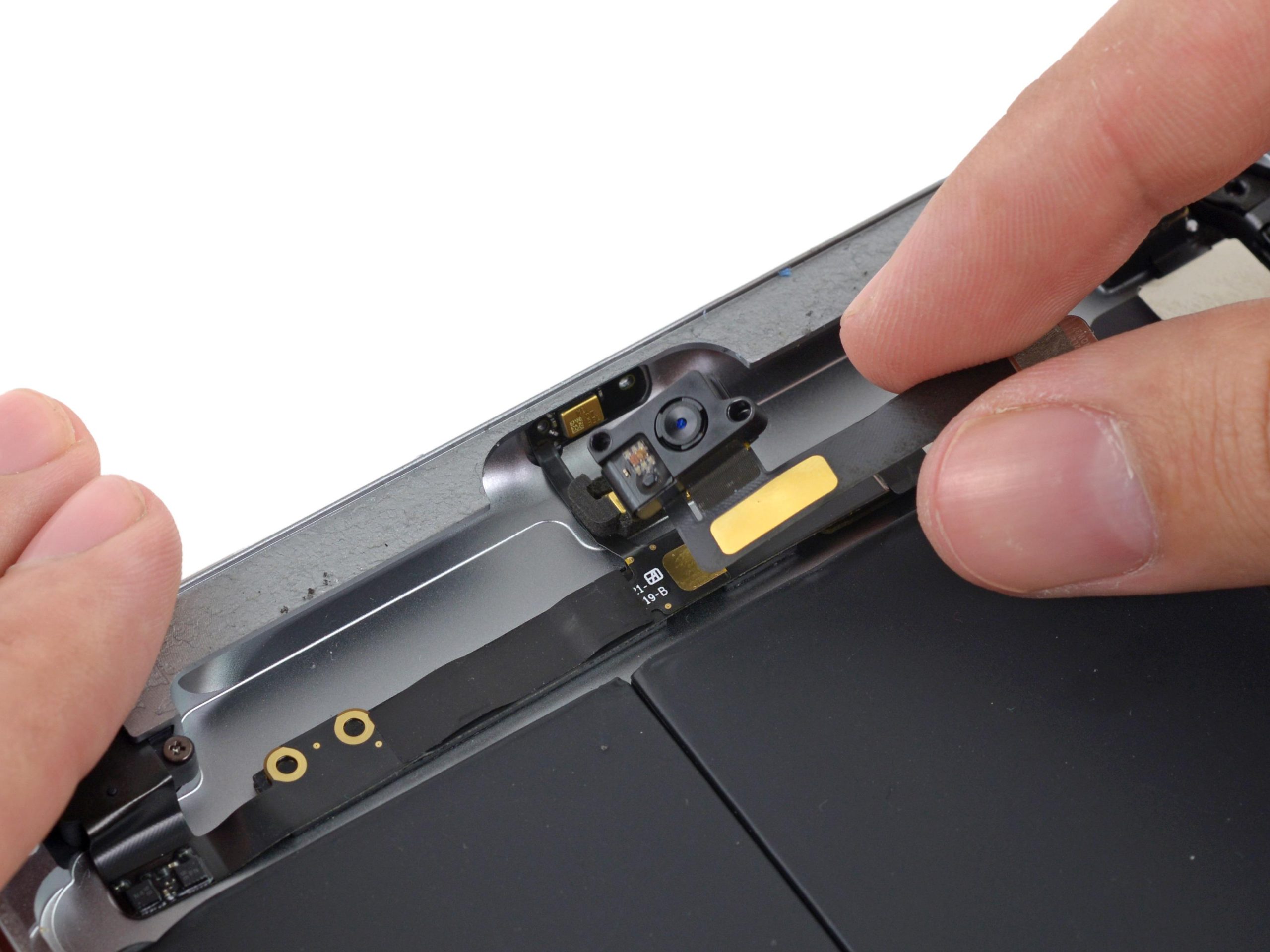How to Replace iPad 4 Wi-Fi LCD – DIY Guide
Duration: 45 minutes
Steps: 32 Steps
Hey there! Just a friendly reminder: make sure to double-check your work at each step. It’s super easy to miss something, and we want your device to be in tip-top shape! If you need help, you can always schedule a repair. You’ve got this!
Time to give your iPad 4 Wi-Fi a little TLC by swapping out that LCD! Let’s dive in and get your screen looking sharp again. If you need help, you can always schedule a repair.
Step 1
It’s a good idea to give your microwave a little TLC before you dive in. Cleaning up any sticky residue on the bottom will prevent it from getting cozy with the iOpener.
– Pop that iOpener right in the middle of the microwave and let the magic happen!
Tools Used
Step 2
Keep an eye on the iOpener during the repair—overheating it can lead to some dramatic results, like bursting. So, let’s keep it cool and don’t heat it above 100˚C (212˚F).
If the iOpener looks like it’s been hitting the gym and is a bit swollen, steer clear of it!
If the middle of the iOpener feels too toasty to touch, just hang tight and let it cool off a bit before you heat it up again. A well-heated iOpener should stay cozy for up to 10 minutes.
– Give that iOpener a warm-up in the microwave for thirty seconds.
– As you work through the repair, keep an eye on the iOpener. If it starts to cool down, just pop it back in the microwave for another thirty seconds to keep things nice and toasty.
Tools Used
Step 3
The iOpener is going to be super toasty, so handle it with care! A trusty oven mitt can be your best buddy here.
– Carefully take the iOpener out of the microwave, gripping it by one of the flat ends to keep your fingers safe from the warm center.
Tools Used
Step 4
If microwaves aren’t your thing, no worries! Just pop your iOpener into some boiling water and you’re good to go.
– Grab a pot or pan and fill it up with enough water to give your iOpener a nice, warm bath.
– Turn up the heat until that water is boiling hot, then switch off the heat!
– Carefully drop your iOpener into the steamy water for about 2-3 minutes, making sure it’s all cozy and submerged.
– Use some tongs to rescue the warmed-up iOpener from its hot tub.
– Give the iOpener a good towel dry—no one likes a soggy iOpener!
– And just like that, your iOpener is all set to go! If it needs a little more heat, just repeat the process: boil the water, turn off the heat, and let it soak for another 2-3 minutes.
Tools Used
Step 5
Pop on some safety glasses to keep your peepers safe, and watch out for that delicate LCD screen—let’s keep it in one piece!
– Got a cracked display glass? No worries! Let’s keep that glass from shattering further and avoid any ouchies while you work your magic. Grab some tape and cover that glass up.
– Lay down some overlapping strips of clear packing tape over your iPad’s display until it’s fully protected. You got this!
– Now, just follow the rest of the guide as best as you can. Just a heads up, once the glass is broken, it might keep cracking a bit as you go. If that happens, don’t be shy—use a metal prying tool to gently scoop out the glass.
Step 6
Just a heads up! As you dive into this repair, you might encounter some sharp glass pieces. We totally recommend rocking a pair of safety glasses to keep those pesky shards at bay.
– Place the iOpener flat against the right edge of your iPad, making sure it’s nice and snug for a solid connection.
– Give the bag a little hangout time on the iPad for about 90 seconds before you dive into opening up that front panel.
Tools Used
Step 7
Getting that wedged tip of the opening tool between the glass and plastic might take a little muscle. Take your time and be gentle, giving the plastic tool a little wiggle as needed. You’ve got this!
– Hey there! You’ll notice a tiny gap in the adhesive ring at the upper right corner of your iPad, about 2.0 inches (~5 cm) down from the top. Let’s make the most of this little flaw!
– Now, position your tool so it aligns with the mute button. Gently slide the tip of a plastic opening tool into that gap between the front glass and the plastic bezel. Just poke it in a smidge to help widen that crack.
Step 9
– With the tip of the plastic opening tool snugly tucked between the front glass and the plastic bezel, gently slide a plastic opening pick into the gap right next to your trusty tool. You’re on your way to a successful repair!
Step 10
– Take the plastic opening tool out of the iPad’s grip, and gently slide the opening pick further beneath the front glass, reaching about 0.5 inches deep.
Step 12
The adhesive is super strong, and you might need to channel your inner Hercules to break it free. Take it slow and steady!
If you can spot the tip of that trusty opening pick peeking out from under the front glass, give it a gentle tug. No worries—using the pick this deep won’t cause any damage, but it might leave a bit of adhesive residue on your LCD. Keep it cool and carry on!
– While the bottom edge is getting a nice warm hug from the iOpener, start peeling away the adhesive from the right edge of your iPad.
– Gently slide the opening pick down the iPad’s edge, letting it work its magic on the adhesive as you go.
Tools Used
Step 13
You might need to slide that warm iOpener back over to the right edge of the iPad as you peel away the adhesive. This will depend on how long the iPad has been chilling while you tackled other tasks.
– If your opening pick is giving you a hard time and getting stuck in the adhesive, just give it a gentle ‘roll’ along the side of the iPad to keep releasing that pesky adhesive. You’ve got this!
Tools Used
Step 14
– Before you pull out that first opening pick from the bottom corner of your iPad, slide a second pick under the right edge of the front glass. This little buddy will keep the adhesive from getting all clingy again.
– Give your iOpener a little reheat love, then place it at the top edge of the iPad. Let’s keep that heat flowing!
Tools Used
Step 15
The Wi-Fi antenna is snugly attached to the bottom right edge of the rear case of the iPad with screws and a cable. Since the orientation of the Wi-Fi antenna is a bit particular, it’s super important to be careful during this process to avoid causing any irreversible damage to it.
– Alright, folks, it’s time to put on your careful hats! We’re about to dive into some delicate work.
– You’ll need to gently free the adhesive that’s holding the antenna to the front panel, all while being super mindful of the fragile bits that connect the antenna to the bottom of the iPad. Take it step by step, and you’ll be just fine!
Step 16
Hey there! Just a quick tip: avoid sliding that pick too far past the bottom right corner. It could lead to some unintended Wi-Fi antenna drama!
– Gently glide that opening pick around the bottom right corner of your iPad, and watch as the adhesive lets go like it’s on vacation!
Step 17
Take your time gliding the opening pick along the bottom right edge of the front panel. Just a heads-up, the Wi-Fi antenna is sneaky close to the corner and can get cut if the adhesive isn’t handled with care. You’ve got this!
Just a heads up: don’t pull the pick all the way out from beneath the front glass. Give it a gentle tug, leaving about 1/8″ (3 mm) of the tip still cozy under there.
– Gently glide the tip of your trusty opening pick along the bottom edge of the iPad to free up the adhesive over the Wi-Fi antenna. You’ve got this!
Step 18
– Once you’ve glided past the Wi-Fi antenna (about 3″ (75 mm) from the right edge, or right next to the home button), gently reinsert the opening pick all the way in.
– Now, slide that pick to the right to release the adhesive that’s holding the Wi-Fi antenna snug against the front glass.
Step 19
Keep the iOpener toasty for no more than a minute at a time, and remember to give it a cool-down of at least two minutes before you heat it up again.
If the adhesive has gotten a bit too chilly along the bottom edge, just give that iOpener another go in the heat department to warm things up where you’re working.
– Keep peeling away that adhesive at the bottom of your iPad! Gently tug the opening pick out far enough to navigate around the home button, then pop it back in about 1/2 inch (10 mm) deep once you’re past that button. You’re doing great!
Tools Used
Step 20
– Keep peeling back that adhesive all the way across the bottom edge of your iPad. You’ve got this!
– Just leave the opening pick snugly placed under the front glass close to the home button. It’s your trusty sidekick for this adventure!
Step 22
If the adhesive has gotten a little too cool for comfort, just swap in a fresh iOpener along the top edge and keep at it! If your iOpener feels a bit chilly, give it another heat-up.
– Gently slide the opening pick along the top edge of your iPad, giving it a little tug to navigate around the front-facing camera bracket.
– The adhesive here is pretty stubborn, so you might need to apply some muscle. Just take your time and be cautious to avoid any slips that could hurt you or your iPad.
– If the opening pick starts to stick in the adhesive, try giving it a little ‘roll’ as shown in step 9.
Tools Used
Step 23
If the adhesive is feeling nice and toasty, go ahead and take the iOpener off the iPad for some easier handling. But if it’s still pretty sticky, no worries! Just give the iOpener another heat-up and rest it on the left edge while you get to work.
– Keep peeling back the adhesive along the top edge of the iPad, and gently maneuver the opening pick around the top left corner.
Tools Used
Step 24
The digitizer cable is hiding about 2″ (50 mm) up from the bottom of your iPad. When you’re sliding that pick, hit the brakes when you’re around 2.25″ (60 mm) from the bottom. You’ve got this!
– Gently glide the opening pick along the left edge of your iPad, easing the adhesive apart as you go. The adhesive is pretty thin here because of the digitizer stretching along the entire left side. Just remember to keep the pick shallow—no more than 1/2 inch (10 mm)—to avoid any mishaps with the digitizer. You’re doing great!
Step 25
Be super careful here! The bottom of the digitizer cable is just about 1 inch (25 mm) from the bottom of your iPad. Take your time and tread lightly to avoid accidentally cutting this cable.
– With the trusty opening pick snugly tucked under the bottom edge of your iPad, gently coax the adhesive free at the bottom left corner. Keep it cool and steady!
Step 26
– Grab one of those nifty opening picks and gently lift the bottom right corner of the iPad. Once it’s up, give it a little pinch with your fingers to hold it in place.
Step 27
Watch out for any sticky stuff still hanging around! Grab an opening pick and gently slice through any adhesive that’s still keeping that front panel in place. You’ve got this!
– Grab your iPad by the top and bottom right corners and gently twist the front glass away from the device, like you’re unveiling a surprise!
– When it’s time to put things back together, remember to whip out a microfiber cloth and some compressed air to give that LCD a little TLC—clean off any dust or fingerprints before you seal the deal with the glass.
Step 28
The bottom left screw is playing hide and seek behind the home button ribbon cable connector. Gently nudge the home button ribbon cable to the side so you can snag that sneaky screw out.
– Unscrew those four tiny 2 mm Phillips #00 screws that are holding the LCD snugly to the aluminum frame. You’ve got this!
Step 29
Handle the LCD with care! That ribbon cable is delicate and could snap if you bend it too much. Keep it cool and steady!
– Grab your trusty plastic opening tool or spudger and gently lift the right edge of the LCD out of the iPad. You’ve got this!
– Now, give that LCD a little rotation along its left edge and carefully lay it down on the front glass panel. Easy peasy!
Tools Used
Step 30
– Grab your trusty spudger and gently lift the tape that’s holding down the LCD ribbon cable connector. You’ve got this!
Tools Used
Step 31
– Gently lift the retaining flap on the LCD ribbon cable ZIF connector. You’ve got this!
– With a little finesse, use your fingers or some tweezers to carefully pull the LCD ribbon cable out of its cozy socket on the logic board.
Tools Used
Step 32
– Gently lift the LCD away from the front panel, being careful not to touch the screen. You’ve got this!







































































